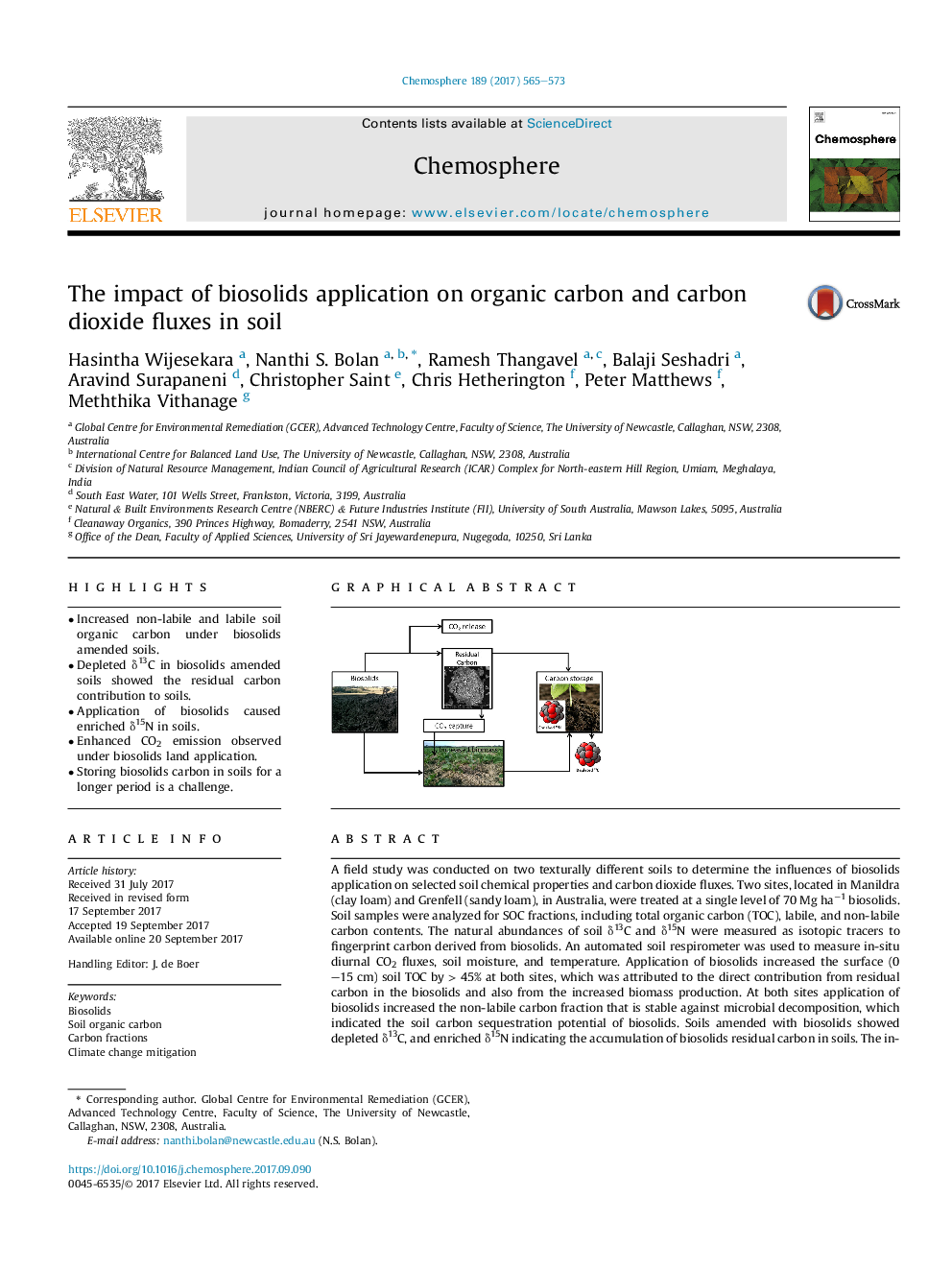| کد مقاله | کد نشریه | سال انتشار | مقاله انگلیسی | نسخه تمام متن |
|---|---|---|---|---|
| 5745934 | 1618782 | 2017 | 9 صفحه PDF | دانلود رایگان |
- Increased non-labile and labile soil organic carbon under biosolids amended soils.
- Depleted δ13C in biosolids amended soils showed the residual carbon contribution to soils.
- Application of biosolids caused enriched δ15N in soils.
- Enhanced CO2 emission observed under biosolids land application.
- Storing biosolids carbon in soils for a longer period is a challenge.
A field study was conducted on two texturally different soils to determine the influences of biosolids application on selected soil chemical properties and carbon dioxide fluxes. Two sites, located in Manildra (clay loam) and Grenfell (sandy loam), in Australia, were treated at a single level of 70 Mg haâ1 biosolids. Soil samples were analyzed for SOC fractions, including total organic carbon (TOC), labile, and non-labile carbon contents. The natural abundances of soil δ13C and δ15N were measured as isotopic tracers to fingerprint carbon derived from biosolids. An automated soil respirometer was used to measure in-situ diurnal CO2 fluxes, soil moisture, and temperature. Application of biosolids increased the surface (0-15 cm) soil TOC by > 45% at both sites, which was attributed to the direct contribution from residual carbon in the biosolids and also from the increased biomass production. At both sites application of biosolids increased the non-labile carbon fraction that is stable against microbial decomposition, which indicated the soil carbon sequestration potential of biosolids. Soils amended with biosolids showed depleted δ13C, and enriched δ15N indicating the accumulation of biosolids residual carbon in soils. The in-situ respirometer data demonstrated enhanced CO2 fluxes at the sites treated with biosolids, indicating limited carbon sequestration potential. However, addition of biosolids on both the clay loam and sandy loam soils found to be effective in building SOC than reducing it. Soil temperature and CO2 fluxes, indicating that temperature was more important for microbial degradation of carbon in biosolids than soil moisture.
235
Journal: Chemosphere - Volume 189, December 2017, Pages 565-573
